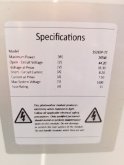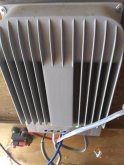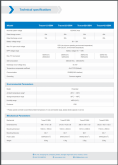Greenmachine 1973
New Member
- Joined
- Apr 12, 2020
- Messages
- 8
Hello,
First time posting. I followed your plan for a 24v 4000 watt system. I am using the 40a mppt charge controller. Everything has been running great. I recently purchased 10 265watt panels off Ebay to upgrade my system array. I started by hooking up 6 of the solar panels 3 in series and then tying in the 2 strings in parallel for a total of 1590 watts. The problem I am having is the controller is now tripping the 50a breaker to the battery. Any insight into what can be causing this would be helpful.
Thanks,
Greenmachine
First time posting. I followed your plan for a 24v 4000 watt system. I am using the 40a mppt charge controller. Everything has been running great. I recently purchased 10 265watt panels off Ebay to upgrade my system array. I started by hooking up 6 of the solar panels 3 in series and then tying in the 2 strings in parallel for a total of 1590 watts. The problem I am having is the controller is now tripping the 50a breaker to the battery. Any insight into what can be causing this would be helpful.
Thanks,
Greenmachine






